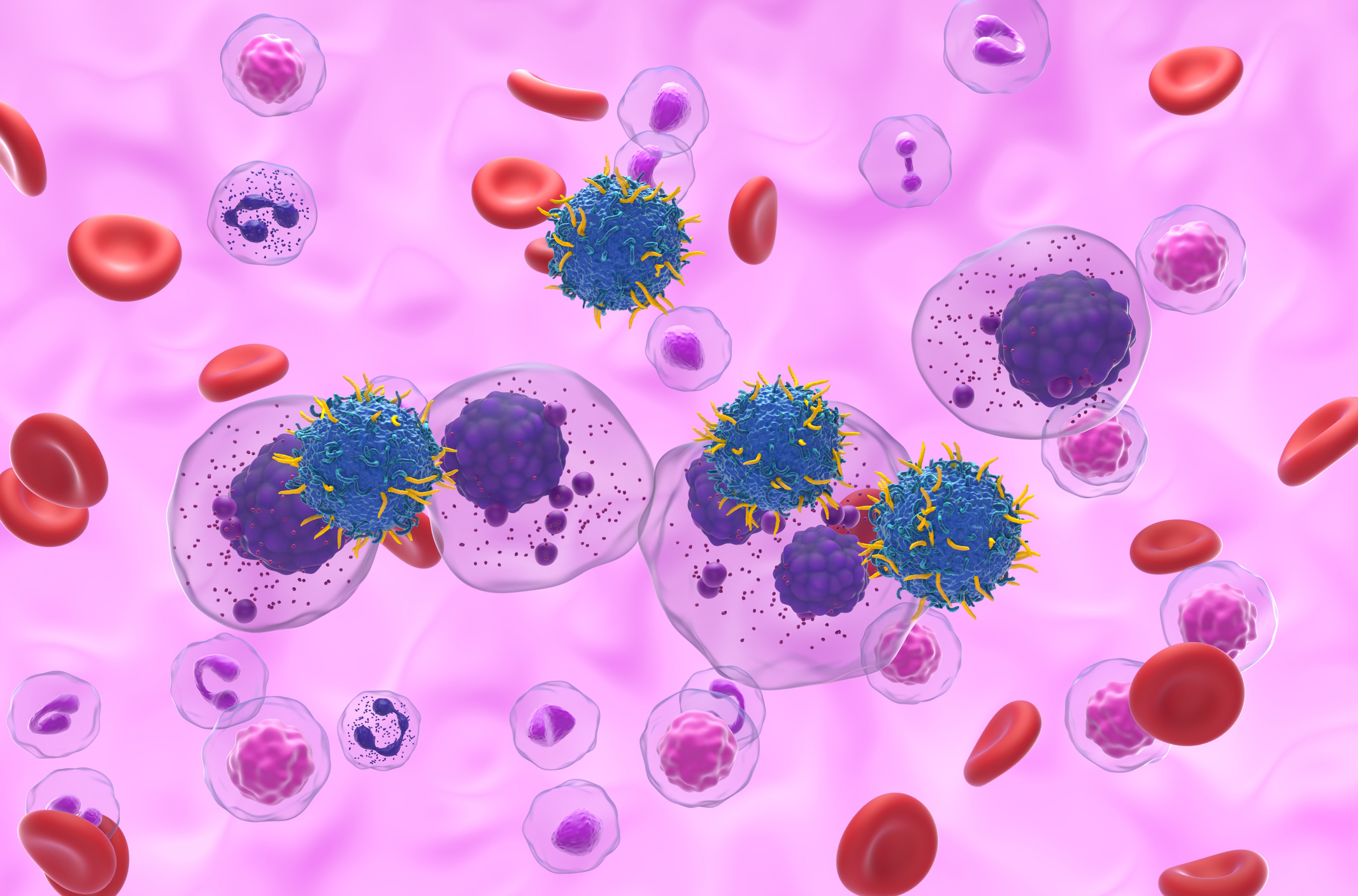Malignant hematologic diseases such as leukemias or lymphomas represent the fourth most common cancer and affect approximately 20/100,000 population per year in Europe. A number of effective substances are now available for individualized therapy management – but research continues…
Malignant diseases of the hematopoietic system, i.e. lymphomas and leukemias, originate in the bone marrow stem cell or its developmental stages. Nowadays, the diagnostic standard almost always includes an analysis of the surface markers of the tumor cell, as well as a cytogenetic and molecular genetic examination. According to the results, the prognostic and therapeutic consequence is derived. Lymphomas are divided into non-Hodgkin’s lymphoma (NHL) and Hodgkin’s lymphoma (HL). In particular, the incidence of NHLs has increased significantly in recent years. NHL is also by far one of the most common malignant neoplasms of the hematopoietic systems. Congenital or acquired defects of the immune defense, autoimmune diseases and infectious diseases could be detected as risk factors. The first signs described are enlarged lymph nodes and splenomegaly. The therapy of this extremely complex disease depends on the type and stage of the disease.
Multiple myeloma is classified as NHL and is a disease of mature B lymphocytes. A single transformed B cell multiplies uncontrollably and produces the same immunoglobulin – usually IgG or IgA. This leads to large amounts of additional blood protein and subsequently to glomerulopathy or tubulopathy with the risk of terminal renal failure. Bortezomib-containing regimens are currently the standard of care in first-line therapy. Very often, a combination of bortezomib, lenalidomide, and dexamethasone is used. It was now investigated whether carfilzomib, a proteasome inhibitor used in second-line therapy, could be used just as effectively instead of bortezomib. However, in the randomized phase III trial, the carfilzomib/lenalidomide/dexamethasone combination did not result in prolonged progression-free survival. It also showed a higher rate of cardiopulmonary and renal toxicity in contrast to standard therapy. The researchers therefore conclude that bortezomib/lenalidomide/dexamethasone should remain the standard of care in first-line multiple myeloma.
Immunotherapy for Hodgkin’s lymphoma
The situation is different, however, in the treatment of Hodgkin’s lymphoma. Here, a phase III trial evaluated immunotherapy with the PD-1 inhibitor pembrolizumab compared with the previous standard brentuximab vedotin (BV) in patients with relapsed or refractory classical Hodgkin lymphoma. In fact, the immune checkpoint inhibitor proved to be comparatively more effective and less toxic. Significant benefits were seen in terms of PFS (13.2 vs. 8.3 months; p=0.0027) and ORR (65.6 vs. 55.2 percent; p=0.02). In addition, because early progression or discontinuation of therapy due to side effects occurred less frequently, treatment in the test arm was given for twice as long as in the control group. Therefore, the investigators recommend that pembrolizumab be established as the new standard in this indication.
Chronic lymphocytic leukemia
Chronic lymphocytic leukemia (CLL) is the most common adult leukemia in Western industrialized countries and primarily affects the elderly. The first symptom to be identified is lymphocytosis of the blood with morphologically unremarkable small lymphocytes. The number of lymphocytes, instead of the usual about 2000/μl of blood, is up to 200,000 cells/μl with a proportion of all leukocytes of up to 95%, and the diagnosis requires at least 5000 lymphocytes/μl of blood.
For the aggressive, rapidly progressive forms of progression, effective targeted substances are now available for treatment. Standard in first-line therapy is the combination of chemotherapy and immunotherapy. Meanwhile, depending on the age and general condition, the treatment can be customized. Current discussions are aimed at the question of what role chemotherapies still play against the background of effectively and durably effective substances. Especially in refractory forms, the scientists see a clear advantage for the new targeted therapies.
Source: ASCO20 Virtual
InFo ONCOLOGY & HEMATOLOGY 3/2020; 8(3): 25 (published 6/20/20, ahead of print).












